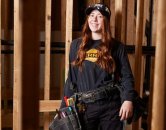Stay informed
House of Commons likely to trade MP desks for benches in restored Centre Block
OTTAWA — MPs will likely have to find a new spot to sign their Christmas cards and prop up their speaking notes when they return to sit in the Centre Block building, as the House of Commons is seriously considering swapping their desks for U.K.-style benches.
Among the myriads of challenges planners of the herculean, multibillion-dollar restoration of Parliament’s Centre Block still face is one about buttocks: how do you ensure seats for an ever-growing number of MPs in the renovated House of Commons?
The most likely answer is to swap out the 343 (and counting) iconic desks for rows of benches like in the U.K. House of Commons.
Darrell de Grandmont, director of the Centre Block Rehabilitation Program for the House of Commons, said various teams and a working group of MPs are currently looking at options for the benches.
The goal is to make them, or at least the first few rows which would be most visible, “look as heritage as possible,” he explained to National Post during a media visit of the Centre Block restoration Wednesday.
Eventually, mockups will be set up for MPs to test and provide feedback before Parliament returns to Centre Block in 2032, he said.
No final decision has been made, de Grandmont noted, but there are only so many ways to fit more people into a room that cannot be expanded. He said planners are working on a scenario where there will one day be 400 MPs in Canada.
The change also brings its lot of challenges, de Grandmont said. For example, there will be no more assigned seating for MPs. The House of Commons will also have to figure out how to ensure the bench layout remains accessible for those with mobility issues.
Many MPs will also miss having their own storage space in a reserved desk in the House of Commons for anything from the day’s speeches to piles of Christmas cards to be signed for constituents.
Other than the likely major change to seating, the goal of the dozen year restoration project of the iconic centennial building and the House of Commons and Senate chambers is for them to look like nothing had changed.
But those who hoped that the Commons would do away with the mustard curtains that famously drape the sides of the room behind MPs’ seats will be disappointed.
de Grandmont admitted that the colour of the curtains comes up frequently during discussions about the renovations, but the goal is to return the space to its original aesthetic.
“We’ve been asked to make sure that we retain the heritage value of that space, which includes all the colours… nothing is going to change,” he told National Post with a chuckle. “The curtain is always being discussed. It turns out, it’s whatever looks best on camera.”
Overall, planners’ and builders’ task is near-herculean. For the past six years, they have stripped a centennial building chock-full with known — and sometimes unexpected, like engravings hidden behind old coats of white paint — heritage pieces down to its bare skeleton.
At the same time, they’ve taken on a massive engineering endeavour: finding a way to build a whole new steel foundation for the building to rest on while workers dig up two additional basement floors under Parliament. In total, they’ve already removed 10,000 tri-axle truckloads of rocks.
“It’s all been transferred onto these steel piles. Our project requires us to go in and excavate underneath… and remove the rock in a gentle and delicate way as to not damage or cause any harm to Centre Block,” said Taggart’s Joe Farquharson.
All this while digging a massive hole in front of the building that will eventually house a modern underground visitors’ centre that should double Parliament’s capacity to welcome guests.
Public Services and Procurement Canada’s Siavash Mahajer, who led the media tour through the skeleton of the building, said the project remains on time despite the challenges of such a major and unique project.
Now, builders are focused on re-constructing the building, he said. That includes completely new flooring between most floors in addition to the two extra levels of basement.
Mahajer also said that, amid U.S. tariffs on steel imports, the government is pushing hard to ensure Canadian steel is sourced whenever possible throughout the project.
“Not everything is available from Canadian sources, but we want to make sure that if something is available, that we buy that,” he told reporters.
He said that likely by this time next year, the whole front of Centre Block will disappear behind scaffolding, including a purpose-built steel structure around the Peace Tower.
National Post
cnardi@postmedia.com
Our website is the place for the latest breaking news, exclusive scoops, longreads and provocative commentary. Please bookmark nationalpost.com and sign up for our politics newsletter, First Reading, here.




Comments
Be the first to comment